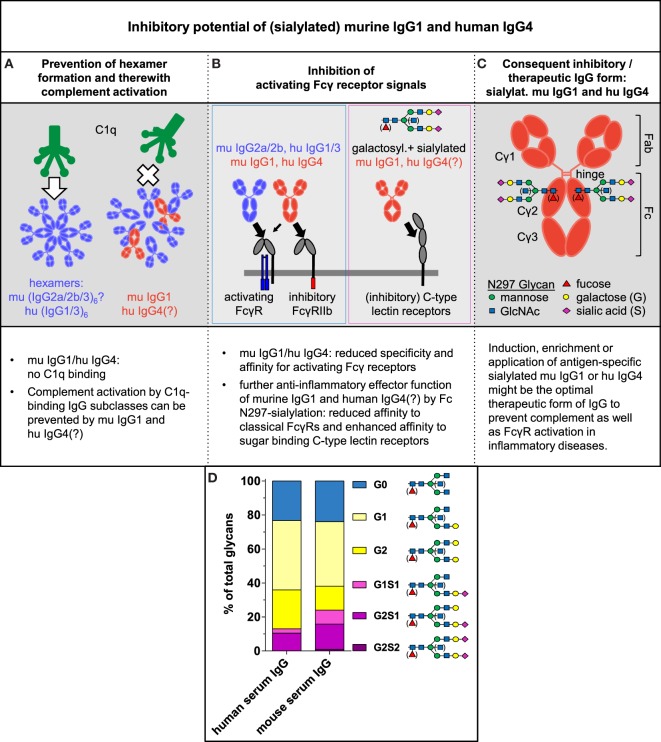Figure 2.
Inhibitory potential of (sialylated) murine IgG1 and human IgG4. (A–C) Summary of our perspective about the inhibitory and therapeutic potential of (sialylated) murine IgG1 and human IgG4 (see text for details). IgG antibodies have one conserved N-glycosylation site at Asn 297 in each of their constant heavy chain regions. The biantennary core glycan structure that consists of four N-acetylglucosamine (GlcNAc) and three mannose residues can be further decorated with fucose, a bisecting GlcNAc and terminal galactose or galactose and sialic acid. (D) Average distribution of total human and mouse serum IgG Fc glycosylation patterns coupled to Asn 297 of total human serum IgG (IVIg; pooled intravenous immunoglobulin from healthy donors) and total murine serum IgG from 8- to 10-week-old untreated female C57BL/6 wild-type mice were analyzed by high-pressure liquid chromatography [data from Epp et al. (19)].

